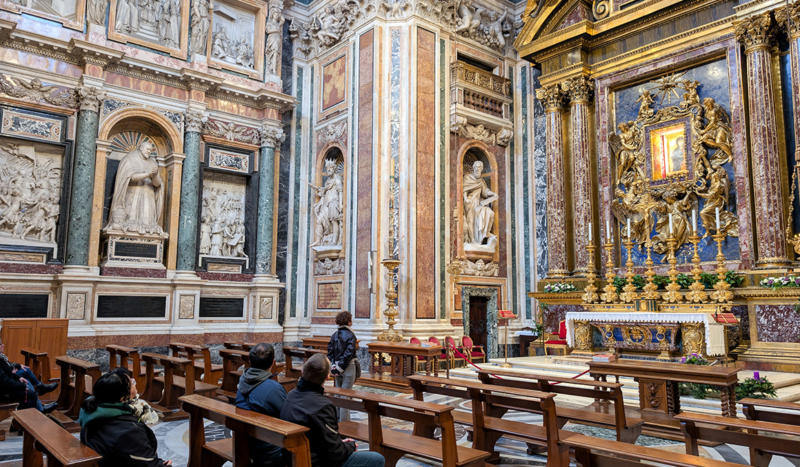
Noah Sauve / Shutterstock.com
VATICAN CITY // Inside Vatican walls May 5, a “small army” of clerics and laypeople stood shoulder to shoulder to swear an oath of secrecy in preparation for the papal conclave that will begin this Wednesday.
The group assembled in the Pauline Chapel included Cardinal Pietro Parolin, the secretary of the College of Cardinals, who will also preside over the cardinals during the voting at the conclave; Monsignor Diego Giovanni Ravelli, the master of Pontifical Liturgical Celebrations; and the Pontifical Masters of Ceremonies. There were also priests chosen to assist the cardinal presiding over the conclave, sacristans, and confessors fluent in multiple languages to serve the spiritual needs of the cardinal electors.
Doctors, nurses, elevator operators, refectory and cleaning staff, florists, technical services, shuttle drivers, and even the colonel and a major of the Pontifical Swiss Guard, who are responsible for security near the Sistine Chapel, joined along with the director of Security Services and Civil Protection of the Vatican City and his collaborators.
Oath of absolute and perpetual secrecy
Each individual approached the Bible, placed their right hand upon it, and recited the prescribed formula. They pledged to “observe absolute and perpetual secrecy with all who are not part of the College of Cardinal electors concerning all matters directly or indirectly related to the ballots cast and their scrutiny for the election of the Supreme Pontiff.”
They also swore not to use any audio or video recording equipment during the period of the election or in any way related to the process itself. Any breach of this oath would result in immediate, automatic excommunication. The ceremony was presided over by Cardinal Kevin Joseph Farrell, camerlengo of the Holy Roman Church, with two apostolic prothonotaries as witnesses.
This ritual, mandated by the Apostolic Constitution Universi Dominici Gregis, is not mere formality. The secrecy oath is a critical safeguard, ensuring that the sacred process of electing the next pope remains free from outside influence, leaks, or technological intrusion. In recent years, the Vatican has reinforced these measures, employing electronic jamming and other security protocols to prevent any breach of confidentiality.
While the cardinals themselves will take a similar oath in the Sistine Chapel before voting, it is this “small army” that makes possible the smooth operation of the conclave whether it’s providing meals and medical care or maintaining the security and sanctity of the proceedings.
The Pauline Chapel, where Monday’s oath was sworn, located next to the Sistine Chapel, was commissioned by Pope Paul III in the 16th century and is renowned for its Michelangelo frescoes, including The Conversion of Saul and The Crucifixion of St. Peter. It is traditionally reserved for papal ceremonies and private prayer.

